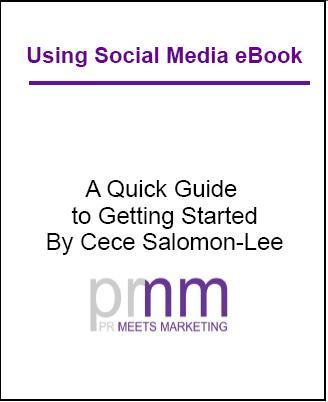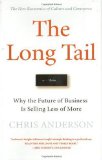Sometimes "Sorry" Is the Best PR
My apologies – this was a guest post by Alli Gerkman when I was on vacation. I didn’t realize that I had to approve this, so here’s the missing guest post:
So, I’m sitting here in a hotel room in Sacramento, one day into a two-day conference. I’d been thinking about what to write since last week when Cece asked me to guest post, but after the day I’ve had, I’m changing direction. That’s the funny thing about blogging. You never know where it’s going to take you.
I’m in Sacramento because I organize and run legal conferences around the country-about 24 each year. Usually, things go seamlessly (or almost seamlessly-it’s hard to imagine a completely error-free event). Occasionally, things don’t. Today was one of those days.
Each mistake, on its own, is relatively innocuous. The conference room is moved and is difficult to find. But people find it and life goes on.
We notice the printer left a section out of the materials. Okay. We can get Kinkos to deliver the missing section within hours.
But then the computer dies mid-presentation, forcing a speaker to finish without PowerPoint. Now people are starting to think, “What is going on here?”
Indeed.
I take these mistakes pretty seriously. The speakers I line up for my conferences are leaders in their fields and the attendees have given us tuition and entrusted us with two full days of their valuable time, so I don’t like to disappoint.
That said, most mistakes are out of my personal control. I could get bogged down in explaining that: “See, after I do the final edits on the materials, it goes to our printer who prints and ships the book. That missing section was there when I reviewed it, but I don’t have another review between when the finals are printed and when they are shipped to the hotel, so there was nothing I could do other than get Kinkos to print the section and send it over.”
But does anyone want to hear that? Did you even want to read it just now? Does it help address the situation in any way? Probably not. So instead, I say, “I’m sorry.”
And I mean it.
Of course, I can’t stop there. “Sorry” doesn’t mean I’m off the hook-it means I’m working harder than ever to get things back on track. But it’s a start to building a stronger relationship with our speakers and attendees. Believe it or not, some of my best evaluations have come from conferences that couldn’t catch a break. After all, it’s easy to represent your company or your brand when everything is going right, but it’s how you react when things go wrong that can set you apart.
Tomorrow is day two and I think we’re in good shape, but wish me luck.
Video Response to "Open Letter to PR Agencies"
I had an interesting conversation with Steve Gershik who writes Innovative Marketer the other day. We discussed his recent post, “An open letter to PR agencies…” which highlighted some of his frustrations over a recent PR agency search. For me, I come from the PR agency background. I truly support PR and want to see PR agencies succeed. But unfortunately, since going in-house, I have to agree with Steve’s points.
Be Honest
In the end, I want a successful partnership (stress partnership here). But in order to do this, you need to be honest with me regarding your workloads and what is truly possible. This way, we can set the right expectations for success. Which leads me to
Referrals are key…
In this economy, referrals are worth their weight in gold. The expectations are higher when you’re referred by a person I trust or I’ve worked with you in the past. But don’t waste this opportunity. If you do poorly in front of my executives, it looks bad for you, me and the person who referred you. In the end, I’ll never refer you again. So bring in your A game and do 150% if you’re referred to me. But one word of caution
Respect My Process
People like Steve and I are managing entire marketing programs. For me, I cannot manage the vetting process from beginning to end so I work with my colleagues to help me in the process. Don’t try to circumvent that process by trying to reach me directly. In fact, you may lose the business as a result. And for PR agencies, would you go around a reporter to the editor becuase you thought the reporter was too slow? I guess it depends but you would think twice before doing that becuase of the remifications, right?
What do you think? Are there any other points to consider?
My Guest Stint on Media Bullseye Podcast
This morning, I was a guest on the Media Bullseye Podcast. Thanks to Jenny and Chip for having me this morning. We discussed the role of social media for finding me my job, what is true authority, and the decline of the print media industry. Listen to the podcast.
Measuring The Cost of Bad or Good Online Reputation
I received this question from Nathalie Seoteman after she read my free ebook on using social media:
How [can you] calculate the value of a company’s online reputation and (marketing) PR 2.0 efforts? What did these activities produce, put in figures and – preferably – in euro’s/dollars? I would like to include both the reputation damage that has been diverted and the positive/negative/neutral online coverage that has been created.
This raises an interesting and very complex question. There will inevitably be tangible and intangible ways to measure the value.
Measuring Positive and Negative Reactions
Assuming that you’re using a tool like Trackur, Radian6 or just Google alerts to track your coverage, the first thing you have to segment the coverage by what Radian6 calls sentiment – negative, neutral or positive. Once you’ve done this for media coverage, video responses, Twitter responses, blogs postings and more, you can get a visual representation of the sentiment over time.
The question then is how do you assign a monetary value to this. One way is to use ad equivalence, which is how much would it have cost you to advertise in a magazine for the same space. The obvious drawback is that this will not cover a significant portion of your coverage and you have to do the time consuming research to find the ad values. But let’s assume that this works for 40% of the videos, blogs and media coverage out there. How do you measure the remaining 60%?
The Value of a Single Customer Won or Lost
I am assuming that you have a sense of your sales pipeline and what the average deal size (let’s keep this simple, ok? =). If you delved into the content of what is being said, how many would say they would 1) hire your company; 2) never work with your company again or 3) are neutral.
I’m making a huge assumption that each person is a potential customer regardless of their company affiliation and title. For example, there are over 589,000 fans on the Skittles Facebook page. If I assumed that each person bought at least one Skittles product that cost $0.75, then the potential value would be $448,500.
You can then do the same with your business: positive = gain average deal size, neutral = zero, negative = costs you average deal size
Conclusions: Not an Exact Science, Yet
I admit that I am ignoring the relative influence and weight of differing outlets, people or prominence of coverage. I also know that not everything can be easily dissected into the three sentiments I highlighted above. But frankly, I didn’t want to turn this posting into an essay ?
While technology is catching up to help automate the process, I believe that there is still a very manual process involved to evaluate the coverage, put it into the appropriate bucket and then assign a value to it. Hence, I recommend that you start simply – take the most simple measurement and build upon it over time. Otherwise, you may find yourself spending more time assembling reports about your online reputation versus managing it directly.
In the end, there is no right answer for measuring the value of bad or good online reputation management. I hope the above provides a starting point for those seeking to calculate this value.
I would love to hear of how others would go about calculating the value of bad and good online reputation.
The “formulas”
Positive Ad Equivalence – Negative Ad equivalence = Total Ad Equivalence
Potential Customer Deal Won – Potential Customer Deal Lost = Value of Potential Customer Deal
Total Ad Equivalence + Potential Customer Deal = Total Value of Positive/Negative Online Reputation
Response to Comments regarding "Would YOU Trust a PR Firm without a Social Media Presence with Your Social Media Programs"
There has been quite a bit of discussion from the original post and on a post by Jeremiah Owyang titled “Walking the Talk: Some Agencies and Vendors Demonstrate Social Media Prowess,”. I honestly didn’t think that my initial effort would generate such discussion, which I think provides a lot of fodder for thought.
I do want to provide my perspective on one aspect of Jennifer Leggio’s comment:
Client service comes first, always. Yes agencies should strive to have a presence of their own but not having a presence on Twitter or LinkedIn for their corporation is not a good measurement — at all.
When reviewing Jennifer Leggio’s post “Is ‘social PR’ for real?”, this paragraph resonated with me:
Agencies need to work hard to ease their clients’ or potential clients’ minds by showing hard metrics of how social programs have worked for other clients. There is also more justifiable pressure on marketers as a whole to demonstrate ROI from social media programs. Clients should start requiring these types of ROI metrics or case studies and not take “this is a new practice” as a valid excuse for the agencies not having proof points. The agency at the very least should be able to show how it’s built its own brand / the brand of its people through social media.
I do agree with the position that a PR agency having a social media presence is not necessarily a barometer of how that agency can deliver results for clients using social media. However, I will argue that an agency’s ability to use these tactics/strategies to build awareness and industry expertise demonstrates understanding of the pressures that clients face and their objectives. This includes increasing incoming sales leads, communicating with key customers, building thought leadership, reaching key audiences, etc.
Besides this particular point, I want to add the following:
-
I recognize that individual contributors are just as important as corporate brands. I will still assert that corporate brands will be just as important for establishing brand awareness and thought leadership
-
With that said, how one participates in social media can be dictated based on one’s audience and goals. I strongly believe that having a presence in the right avenues helps to drive an agency’s lead generation efforts
-
Since I was laid off, I decided to do this research out of curiousity. I knew it would take time and spent a several hours over a two week period to “research” the original list. As I was doing this myself, I acknowledge that I may have missing or incorrect information. As such, I appreciate those who have provided updates in comments or emails to me. I have updated the table accordingly.
And finally, as this endeavor is much bigger than I originally anticipated, I have set up a public wiki for agencies and the community to make updates directly.
FREE Using Social Media eBook
 After the past week’s distractions, I’ve been able to finalize a FREE eBook that compiles the Using Social Media Series into one easy-to-use guide. The previous posts included:
After the past week’s distractions, I’ve been able to finalize a FREE eBook that compiles the Using Social Media Series into one easy-to-use guide. The previous posts included:1) Using Social Media: Part 1 – Microblogging
2) Using Social Media: Part 2 – Search Feeds
3) Using Social Media: Part 3 – Social Networking Sites (Updated link)
4) Using Social Media: Part 4 – Linking Strategies
5) Using Social Media: Part 5 – Blogger Relations
6) Using Social Media: Part 6 – Measurement
Again, the purpose of this eBook is to provide a quick guide for using social media. If you find this eBook valuable, please forward this to your friends, share on Facebook, retweet it or let me know what you think. I just ask that you provide attribution to the site.
Let me know what you think. I look forward to improving this moving forward.
Using Social Media: Part 6 – Measurement
This is the sixth post in a 6 part series on how I using social media. In this sixth installment, I discuss measurement.
Measure What Counts
There has been discussion about how to measure social media and can it truly impact your bottom line. The same could be said of public relations. In the end, it’s measuring what counts for your business.
Personally, I think it’s important to determine your baseline measurements to gauge the effectiveness of your strategies over time. Consider keeping it simple, selecting 3-4 points to track. As you gather more information, you can better refine and expand your measurement criteria. Here are some basic points to measure:
* Subscribers, Followers, Fans: One way to track the success of your programs is by the steady growth of subscribers to your blog, followers on Twitter or fans on Facebook. Feedburner is a nice way to track subscribers to your blog or any RSS feed that you create for corporate updates, such as press releases, newsletters, etc.
* Audience Reach: The key aspect of social media is tracking “word of mouth” or the reach of your content to your key audiences.
Twitter – Tweetburner allows you to create a short URL for Twitter and then tracks who has retweeted the link or clicked on it. You can keep your stats private or public. While this is a great tool, I’ve found that people will create their own short URLs for the content, so you may want to actively search on your Twitter ID for possible retweet. I then add up the number of subscribers for these individuals to get a “number” regarding reach.
Online Reputation: Another way to determine reach is to track who is talking about you online. I wrote a bit about this in my second post – Using Social Media: Part 2 – Search Feeds. The added component is determining the reach of these online outlets. While ad equivalence can be used too, I’m not a fan of this method as I point out in my next bullet point.
* Incoming Leads, Inquiries: There are a couple of free tools such as Quantcast and Google Analytics that provide good detail about your incoming traffic. The key is to closely track the referring sources for the incoming leads and the conversion rates. For example, Twitter is quickly becoming a driver of traffic to my blog or answering a question on LinkedIn can lead to an inquiry about your services.
* Increased Links: Before you start your programs, take a quick snapshot of sites that link to your website. While a basic stat, this can have huge SEO implications for your site, which in turn, increases your visibility on search engines. Check to see if your efforts increase this basic stat.
* Conversation Index: Steve Boyd discusses the Conversation Index as a way to determine which blogs are successful. Basically, successful blogs are those have a more comments than posts. I would think that the same value can be applied to Twitter, LinkedIn and Facebook. The more that people interact with your company and messages, one can assume the more engaged they are with you.
Conclusion
No matter what you do, measurement has to be an integral part of your program. Identifying the key data points relevant to your business, you can better justify these programs to your executive management. And who can argue with a program that has a low cost per lead and high conversion rate for sales?
Other posts in the series:
Using Social Media: Part 1 – Microblogging
Using Social Media: Part 2 – Search Feeds
Using Social Media: Part 3 – Social Networking Sites (updated link)
About
Favorite Service
Recent Comments
- on Going Virtual Isn’t Necessarily the Answer to Replacing Your Physical Events
- on Going Virtual Isn’t Necessarily the Answer to Replacing Your Physical Events
- on Going Virtual Isn’t Necessarily the Answer to Replacing Your Physical Events
- on Going Virtual Isn’t Necessarily the Answer to Replacing Your Physical Events
- on Going Virtual Isn’t Necessarily the Answer to Replacing Your Physical Events
Ads by Google
Favorite Books
Marketing Blogs
PR Blogs
- KD Paine's Measurement Blog
- Micro Persuasion
Virtual Events & Meetings Blogs
- Cisco Virtual Environments
- It's All Virtual
- The Webinar Blog
- Virtual Edge Institute

 Follow
Follow


 Cece Salomon-Lee is director of product marketing for Lanyon Solutions, Inc. and author of PR Meets Marketing, which explores the intersection of public relations, marketing, and social media.
Cece Salomon-Lee is director of product marketing for Lanyon Solutions, Inc. and author of PR Meets Marketing, which explores the intersection of public relations, marketing, and social media. 


